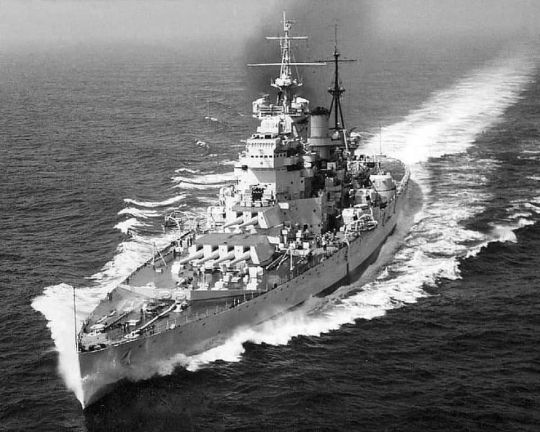#hms king george v
Text

Some King George V-class girls while I avoid my schoolwork. :V
#reblogs are greatly appreciated!! <3#Monarch is KGV-class in my heart okay? </3#Speaking of Monarch--don't mind her missing hat I just couldn't draw it decently#azur lane#azur lane royal navy#hms prince of wales#hms king george v#hms monarch#I will never be quite sure how to tag Azur Lane characters#digital art#digital artist#fan art#fan artist#artist on tumblr
10 notes
·
View notes
Text
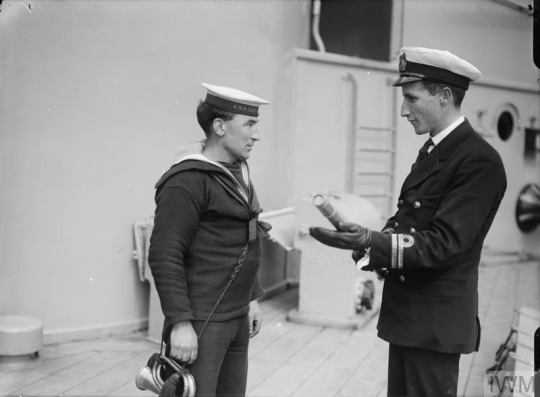
The officer of the watch speaking to the bugler on board of the battleship HMS King George V, February 1918.
9 notes
·
View notes
Text

"U.S. and British Warships in Sagami Wan, Japan"
(Left to right) HMS Duke of York, USS Iowa (BB-61), a Fletcher class destroyer, USS South Dakota (BB-57), USS Pasadena (CL-65), USS Missouri (BB-63), HMS King George V, USS San Juan (CL-54), and two New Mexico class battleships.
Photographed sometime between August 27 and 29, 1945.
NHHC: 80-G-K-6523
#HMS Duke of York#King George V Class#USS Iowa (BB-61)#USS Iowa#Iowa Class#HMS King George V#USS Missouri (BB-63)#USS Missouri#USS South Dakota (BB-57)#USS South Dakota#South Dakota Class#New Mexico Class#Dreadnought#Battleship#USS Pasadena (CL-65)#USS Pasadena#Cleveland Class#USS San Juan (CL-54)#USS San Juan#Atlanta Class#Cruiser#Fletcher class#Destroyer#warship#Japan#United States Navy#US Navy#Navy#Royal Navy#my post
24 notes
·
View notes
Video
youtube
Revell - HMS King George V - 1/1200 - Model Building Video
#youtube#Revell#Revell Models#HMS King George V#Revell HMS King George V#Model Ship#Revell Model#Model Building#WW2#WWII#World War 2#Maritime#Nautical#original content
0 notes
Text

Snow is
#azur lane#アズールレーン#hms#duke of york#デューク・オブ・ヨーク#king george v#キング・ジョージ5世#howe#ハウ#prince of wales#プリンス・オブ・ウェールズ#monarch#モナーク#royal navy#イギリス海軍#kgv sisters
295 notes
·
View notes
Text

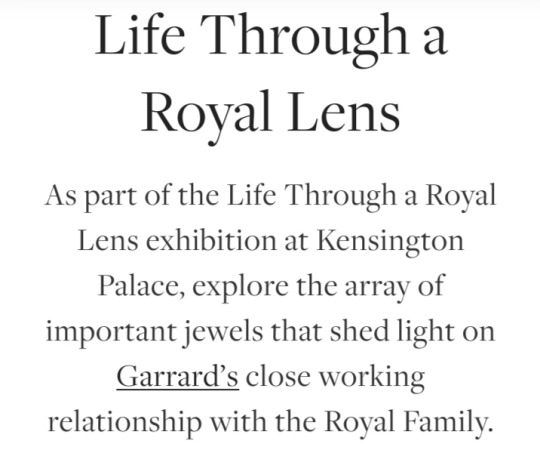
In her “accession” photographs, shot in 1952 by Dorothy Wilding, HM Queen Elizabeth II is pictured with the Girls of Great Britain and Ireland Tiara upon her head – a jewel that you might recognize because Her Majesty is seen wearing it on the front of every Bank of England banknote.
Originally the property of Queen Mary, Duchess of York, Princess of Wales and finally Queen Consort of King George V, the Girls of Great Britain and Ireland Tiara was crafted by Garrard in 1893 to be given as a wedding present from the Girls of Great Britain and Ireland committee.
Designed to be transformable, allowing it to be worn as either a necklace or coronet, over the years, Queen Mary requested that Garrard add diamonds, remove pearls, and separate the bandeau from the base so that she could wear it as a headband.
In 1947, Queen Mary gave the tiara to Princess Elizabeth as a wedding present. In 1969, now Queen Elizabeth II, she asked for the bandeau and tiara to be reunited, as it remains today.
Worn frequently by Her Late Majesty The Queen, the Girls of Great Britain and Ireland Tiara is an ongoing source of inspiration for Garrard’s designers, with the repeated pattern of diamonds encircling the base reflected in the round and geometric Windsor motif, which is a signature of the Albemarle and Fanfare jewellery collections.

The Queen’s love of brooches is legendary, and in Bob Thomas’ intimate portrait of Her Majesty at the Royal Windsor Horse Show, she is pictured wearing the Cullinan V Heart Brooch, one of several important brooches commissioned from Garrard by the Royal Family.
Showcasing the 18.80-carat heart shape Cullinan V diamond, the fifth-largest gem to be cut from the 3,106-carat Cullinan Diamond – the largest gem-quality rough diamond ever discovered – the diamond was given to Queen Mary in 1911 as a gift from the South African government.
It was originally worn by Queen Mary as part of the suite of jewellery made by Garrard for her to wear at the Delhi Durbar in 1911.
When Queen Mary died in 1953, the Cullinan V Brooch was passed to her granddaughter, Her Late Majesty Queen Elizabeth II, who was photographed wearing it throughout her reign.

The Sapphire and Diamond cluster ring worn by Catherine, Princess of Wales, formerly Duchess of Cambridge, in the 2013 portrait by her father Michael Middleton is among Garrard’s best-known creations.
Set with a magnificent 12-carat oval Ceylon sapphire, encircled by a cluster of diamonds set in 18 carat white gold, the ring was personally chosen by Lady Diana Spencer for her engagement to Prince Charles.
It became instantly famous after it was prominently showcased in an engagement shoot in 1981 that took place in the grounds of Buckingham Palace.
A new chapter in the story of Princess Diana’s engagement ring was written when, in 2010, William, Prince of Wales, formerly Duke of Cambridge, chose to propose to Catherine Middleton with the same engagement ring his father had given to Diana.
As this royal jewel, passed down through generations, takes on new meaning and sentiment upon Princess of Wales’ hand, we continue to honour this history-defining design in the 1735 collection.
Garrard’s iconic cluster setting also features prominently in the Jewelled Vault, where each one-of-a-kind creation is designed around an exceptional central stone.

A page from the scrapbook of Princess Victoria of Wales, daughter of King Edward VII and Queen Alexandra, shows photographs of Alexandra, dating from 1901, wearing a diamond crown that is much smaller than a traditional royal crown.
Crafted by Garrard in 1871 at the request of Queen Victoria, the miniature crown was designed to be worn over Queen Victoria widow’s cap.
Set with more than 1,000 diamonds and featuring alternating crosses and fleur-de-lis motifs, Garrard created the crown so that the arches could be removed.
Queen Victoria wore the Small Diamond Crown for the first time at the opening of Parliament in 1871 and frequently thereafter for state occasions.
After Queen Victoria’s death, the crown was worn by Queen Alexandra, who in turn passed it to her daughter-in-law, Queen Mary.
Today, Queen Victoria’s Small Diamond Crown is housed at the Jewel House at the Tower of London, where it is on display.
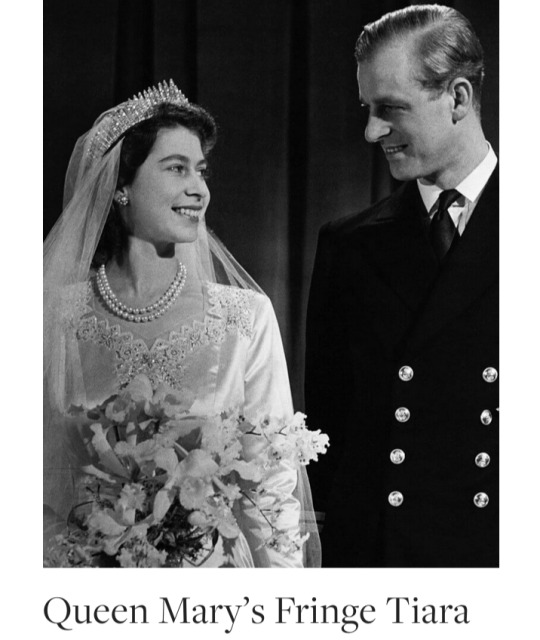
Both King George VI and HM The Queen are pictured wearing the Imperial State Crown in the Life Through a Royal Lens exhibition.
The 10th iteration of this historic jewel, the crown was crafted by Garrard in 1937 for King George VI and adjusted for The Queen ahead of her coronation in 1953.
Some of the most historic gems in the royal collection reside in this Crown Jewel, including, at the front of the crown, the Cullinan II, the second largest diamond cut from the 3,106-carat Cullinan Diamond – the largest gem-quality rough diamond ever discovered.
Above it, mounted on a diamond Maltese cross, is the Black Prince Ruby, which is not a ruby at all.
In the 16th century, it was discovered that this blood-red semi-polished stone is, in fact, a spinel, a gem that is often referred to as “the great imposter” after it was discovered that some of the most famous “rubies” seen in crown jewels around the world are, indeed, spinels.

A big moment in Garrard’s history was the recutting of the Koh-i-Noor Diamond.
This sizeable white diamond was first displayed to the public at the Great Exhibition of 1851.
In 1852, Prince Albert, who was instrumental in the creation of the Exhibition, commission Garrard to recut the diamond.
The intensely demanding cutting process lasted eight weeks and was overseen by The Duke of Wellington.
Garrard worked to create more facets to enhance its beauty; consequently, the diamond emerged as a dazzling brilliant weighing 105.6 carats.
In 1911, the Koh-i-Noor was set into Queen Mary’s Crown, newly created by Garrard for the Coronation.
Today, the fabled Koh-i-Noor Diamond (which is now only worn by a woman – if a man wears it, he will supposedly be cursed) is set at the centre of The Queen Mother’s Crown created by Garrard in 1937.

In a black-and-white photograph taken at the Delhi Durbar in 1911, held to mark the coronation of King George V and Queen Mary as Emperor and Empress of India, Queen Mary is pictured wearing the magnificent Delhi Durbar Suite.
Created by Garrard at the request of the Queen, who wanted a suite of jewels that perfectly captured the majesty of the occasion, the suite included an emerald and diamond tiara, earrings, a brooch, a stomacher, and a spectacular necklace.
Designed by Garrard in a striking circlet style, the Delhi Durbar necklace is set with eight large cabochon emeralds known collectively as the Cambridge Emeralds, with a pendant suspended beneath set with a ninth Cambridge Emerald.
In 1912, Garrard made slight alterations to the necklace, making the emerald pendant detachable and adding a second removable pendant showcasing the 8.80-carat marquise cut Cullinan VII diamond.
Queen Mary regularly wore the necklace and the other jewels in the parure for the rest of her life, after which they became the property of Her Late Majesty Queen Elizabeth II, who inherited the Delhi Durbar Necklace in 1953 and had worn it on many occasions.
The Delhi Durbar Tiara, meanwhile, was given by Her Late Majesty The Queen to Camilla, Queen Consort, after her marriage to His Majesty King Charles III.

Commissioned by Queen Mary in 1919, the Fringe Tiara was crafted by Garrard in the fashionable Russian style reminiscent of a kokoshnik and designed to be convertible so that it could be worn as either a tiara or a necklace.
Queen Mary gave the tiara to her daughter-in-law, Queen Elizabeth, later the Queen Mother, who was pictured wearing it in Cecil Beaton’s whimsical portrait.
Queen Elizabeth in turn loaned it to her daughter, Her Late Majesty Queen Elizabeth II, then Princess Elizabeth, to wear for her wedding to Philip Mountbatten in 1947 as her “something borrowed.”
In 1974, the Queen Mother loaned the Fringe tiara for another royal wedding, that of her granddaughter Princess Anne.
Most recently, it was worn by Princess Beatrice on the occasion of her wedding to Edoardo Mapelli Mozzi in 2020.

Originally created by Garrard in 1870 for Florence, Lady Poltimore, the 2nd Baron of Poltimore, the Poltimore Tiara was not publicly known until it was acquired by Princess Margaret prior to her engagement to Antony Armstrong-Jones in 1959.
Featuring elegant diamond scrolls evocative of flora – an enduring source of inspiration during the Victorian era in which it was made – it quickly became one of the Princess’s most prized possessions.
In the ensuing years, both Margaret and the towering jewel were regularly in the spotlight, including, most famously, the photograph on show as part of the Life Through a Royal Lens exhibition featuring the Princess wearing the Poltimore Tiara in the bathtub.
#Queen Elizabeth II#HM Queen Elizabeth II#Girls of Great Britain and Ireland Tiara#King George V#Queen Mary#Cullinan V Heart Brooch#Sapphire and Diamond Cluster Engagement Ring#Lady Diana Spencer#Diana Princess of Wales#Catherine Middleton#Catherine Princess of Wales#Queen Victoria#Prince Albert#Small Diamond Crown#Queen Alexandra#Imperial State Crown#Cullinan II#Black Prince Ruby#Koh-i-Noor Diamond#Great Exhibition of 1851#Delhi Durbar Suite#Cambridge Emeralds#Cullinan VII#Delhi Durbar Tiara#Fringe Tiara#Poltimore Tiara#Princess Margaret#British Royal Family#Dorothy Wilding#Tower of London
53 notes
·
View notes
Text
The Flying Dutchman
The #myth of The Flying Dutchman #history #mystery
The fate of a merchant ship owned by the Dutch East India Company, which went missing off the Cape of Good Hope in 1641, was the source of increasingly more lurid tales. By May 1821, Blackwood’s Edinburgh Magazine was telling how its captain, Van der Decken, after searching vainly for the Cape and caught in a storm, swore that he would round it, even if it took until doomsday. The ship was…

View On WordPress
1 note
·
View note
Text
Name: King George V
Full Name: George Frederick Ernest Albert
Born: June 3, 1865 at Marlborough House, London
Parents: Edward VII and Alexandra of Denmark

0 notes
Text
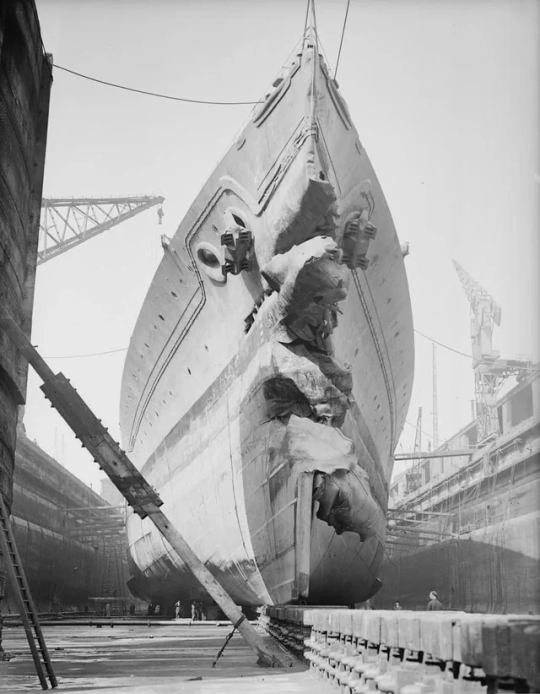
Bow damage to HMS King George V from her collision (and sinking of the destroyer Punjab) on 1 May 1942.
97 notes
·
View notes
Text


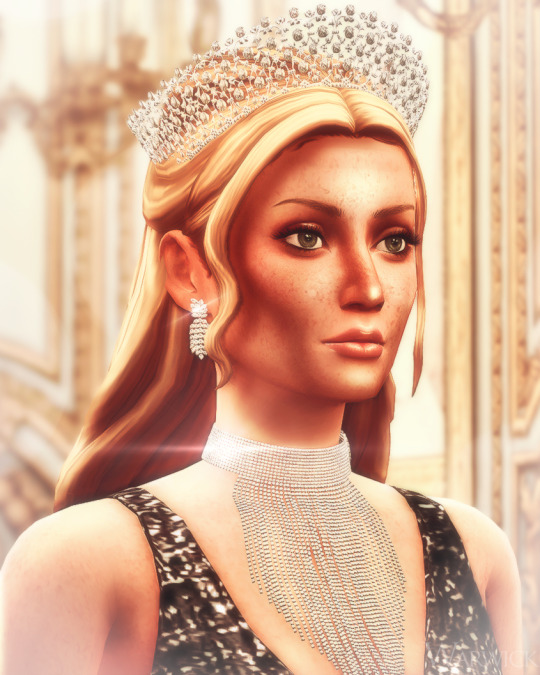

Sunderland's Royal Jewel Vault (16/∞) ♛
↬ The Boucheron Lattice Tiara
Another giant in the royal family's treasure trove, the Lattice Tiara, also known as the Gordon Tiara, takes some serious experience to pull off. Made by Boucheron in the early 20th century, the tiara wasn't originally of royal origin, passing from jewelry box to jewelry box for the better part of forty years. Eventually, in 1941, it was scooped up by the Hon. Mrs. Martha Gordon, a society hostess who was a friend of King James II and Queen Katherine, then the newlywed Duke and Duchess of Woodbine.
The Gordons were spectacular hosts, but by the early 60s the couple had racked up a significant amount of debt, fuelled by Mrs. Gordon's expensive taste in clothes and her husband's gambling addiction. These debts eventually caused the couple to be evicted from their West Warwick penthouse, with several of their belongings being sold or repossessed. To alleviate their friends' hardships, James and Katherine purchased several pieces of expensive jewelry from the couple.
The idiocy of Mrs and Mr Gordon is something to behold. Dowager Queen Anne wrote in her diary around the time of purchase. I warned Jimmmie against such an outrageous purchase, but he was adamant. Kitten and I look after our friends, he said. One wonders what those two have that's worth such a pretty penny! It's better not to indebt yourself to your inferiors, but I suppose I'm close-minded in my old age. Jim said that, too.
To this day the full extent of the purchase is unknown, but it is said to have included a diamond necklace, a pair of diamond chandelier earrings, a sapphire necklace, a gaudy fringe necklace, and at least two tiaras. It was the Boucheron tiara, with its delicate lattice patterning that became a favourite of Queen Katherine.
I admit, I've coveted this [tiara] for years [. . .] It never suited Martha's head, anyway. — Queen Katherine in a private letter, spring circa 1962
For the remainder of her life, Katherine wore the lattice tiara consistently. Even after her husband died in 1970, she continued to sport the tiara at high-profile events. The tiara was an interesting part of Katherine's tiara evolution, showcasing how the Queen graduated from small, light-weight tiaras, to heftier, more dramatic pieces. When Katherine died in 2018, it was inherited by her son, King Louis V, and in 2026, it was worn by Tatiana, Princess of Danforth for the first time. The upgrade in jewelry, despite the princess's widowhood, was viewed as a reformation of her status and role as the mother of the future sovereign.
HM Queen Katherine wears the Gordon tiara at the George League Gala concert on April 25, 1970. She pairs the tiara with teardrop earrings also acquired in the 1962 Gordon Purchase and Queen Matilda Mary's Wedding Necklace
HRH Tatiana, Princess of Danforth wears the Gordon tiara at a banquet for international heads of government on May 23, 2027. She also wears the Gordon fringe necklace. The banquet was attended by over 5000 delegates.
#warwick.jewels#✨#ch: tatiana#ch: katherine#ts4#ts4 story#ts4 royal#ts4 storytelling#ts4 edit#ts4 royal legacy#ts4 legacy#ts4 royalty#ts4 monarchy#ts4 screenshots
49 notes
·
View notes
Text
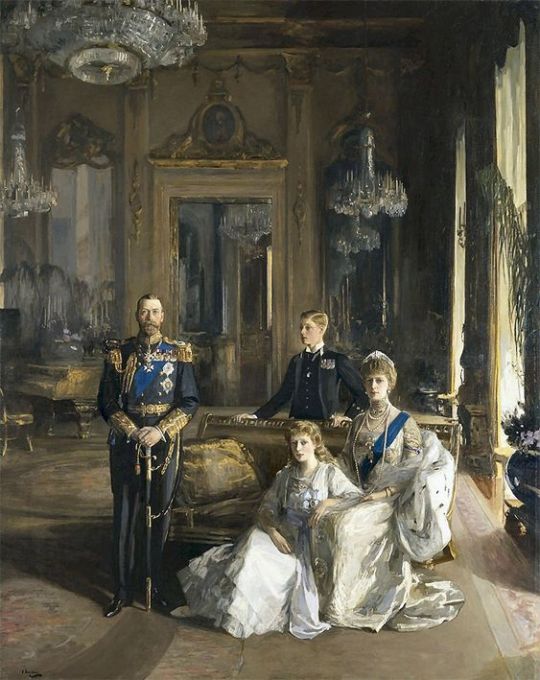
HM King George V and HM Queen Mary with TRH The Prince of Wales and The Princess Royal, Buckingham Palace, 1913.
94 notes
·
View notes
Text
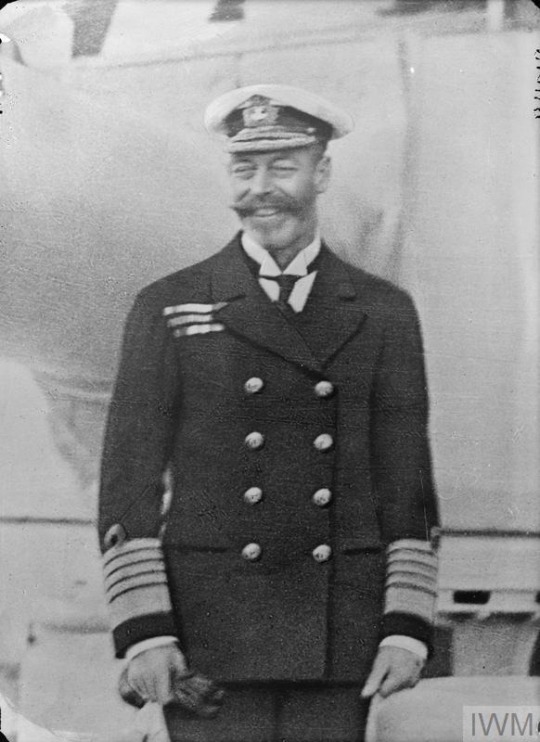
HM King George V on the quarter deck of HMS QUEEN ELIZABETH of the Grand Fleet.
55 notes
·
View notes
Text
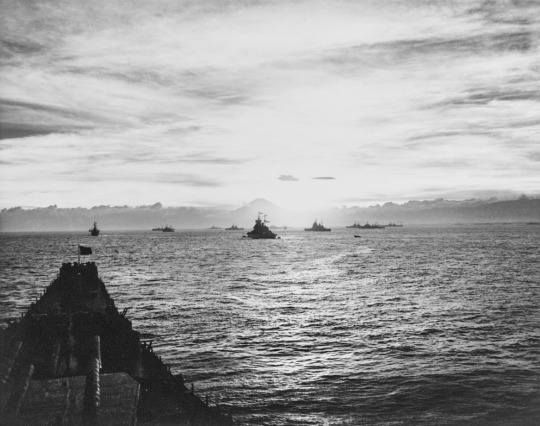
The sun sets behind Mount Fujiyama on August 27, 1945, as seen from USS Missouri (BB-63) anchored in Sagami Wan, outside of Tokyo Bay. Ships of the U.S. Third Fleet and the British Pacific Fleet are in the distance. Closest to the camera, in center, is HMS Duke of York, with HMS King George V next beyond her.
NHHC: 80-G-490414
#USS Missouri (BB-63)#USS Missouri#Iowa Class#Battleship#HMS Duke of York#HMS King George V#King George V Class#Sagami Wan#Toyko Bay#Japan#Nippon#Mount Fujiyama#August#1945#united states navy#us navy#navy#usn#u.s. navy#world war 2#world war ii#WWII#WW2#wwii history#history#warship#Royal Navy#my post
39 notes
·
View notes
Text
#micromodel #hmskinggeorgev #papermodel #modelship #modelbuilding #battleship #micromodelshmskinggeorgev #papercraft
instagram
#micro models#hms king george v#paper model#model ship#model building#battleship#micro models hms king george v#papercraft#original content#Instagram
0 notes
Text
The Duffle Coat
It gets cold and that was also a big problem on the Navies' ship. There were large overcoats, but these were mainly for the officers. The ordinary sailors also had warm jackets but nothing resembling an overcoat and so the duffle coat came into play at the end of the 19th century.

Sailors of HMS King George V in WW1 in warm Duffle Coats
The most widespread myth about the origins of the duffle is that the coat is of Belgian origin. The Belgian town of Duffel in the province of Antwerp was known in the 15th century as a cloth-making town that exported its fabrics throughout Europe. The "duffel" fabric itself was a black, coarse woollen fabric, after which the duffle coat was named, but it was never made in the city that gave it its name, nor was it made from duffel fabric. It was probably initially English wool that was used for it.
Many claim that the English borrowed the Belgian term to create the duffle coat as we know it today. In 1820, John Partridge, a British outerwear merchant, began designing and offering the duffle coat for sale. At that time, it looked very different to today, although it was already equipped with the characteristic wooden buttons, as it was inspired by the Polish frock coat, the so-called Bekiesza.

Walter Luyken as corporation Student in Bonn (Germany) wearing a Bekiesza, 1928/29
A few years later in the 1890s, the Royal British Navy was looking for a hard-wearing, seaworthy coat, and so the British Admiralty commissioned the duffle coat, which proved to be a great success and was worn on military ships all over the world from then on. Just like the modern duffle coat, it was fitted with a hood and a horizontal toggle fastening. Of course, there were no pockets on a coat back then, and it was cut tighter than the bulky cut of the British navy, but there is still a great similarity.
86 notes
·
View notes
